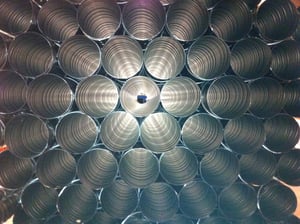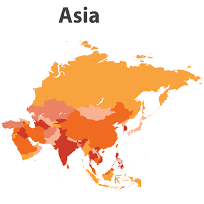Widecells Group PLC (LON:WDC) Chief Executive Officer João Andrade and Chief Scientific Officer Professor Peter Hollands caught up with DirectorsTalk for an exclusive interview to discuss the licence awarded from the Human Tissue Authority, the revenue model for BabyCells, the benefits to other divisions and what investors should expect in the coming months.
Q1: Peter, we saw this morning that you’ve been awarded a licence from the Human Tissue Authority, what does that mean for Widecells Group?
A1: It means a great deal to us. Last year, we were issued our research licence from the Human Tissue Authority and this enable us to carry out cutting-edge research in our laboratory in Manchester but yesterday, we were delighted to be issued with our Human Tissue Authority human application licence. What this does it enable us to collect, process, store and release for transplants, umbilical cord blood and umbilical cord tissue and what this means is that we can now launch our BabyCells product in the UK and Europe and offer cord blood and cord tissue storage to our clients.
It is a critical step in our end-to-end stem service provision which is our overall company view and of course, it places the Widecells’ Institute of Stem Cell Technology in Manchester as a leading stem cell facility in the UK.
Q2: Is it easy to get a HTA licence, do lots of companies have them?
A2: No, certainly not. It’s a very difficult process and this is quite right because what it ensures is the quality and safety of the stem cell product that will ultimately be used to treat someone, so this is to protect future transplant patients. There are about 100 human application licences in the UK, most of these are hospitals and a very few of the others are private companies such as ourselves. It’s a complex process to go through, I’ll just briefly summarise, you have to have a quality management system, so we have to have standard operating procedures policies, quality management and so on. We have to validate our equipment, our facility, our processing and storage and of course, our staff have to be trained and competent and our documents have to meet HTA requirements especially those relating to consent, the processing storage and the overall agreement.
Overall, this is day one really, it’s an ongoing process, we must maintain the system, that’s absolutely critical and of course, there will be regular inspections of our facility to ensure that we do so.
Q3: How does your service now differ from your competitors, João?
A3: As Peter just mentioned, our cryopreservation facility is the most up to date in Europe and the UK and we’re using state of the art processing in cryopreservation equipment and we’re operating under the higher security monitoring protocol and being licenced by the Human Tissue Authority. This is a service where families are trusting a company to freeze their baby’s umbilical cord blood stem cells so it’s very important to consider that we are fully licenced by the Human Tissue Authority, that we are the only company within this industry providing these services that is quoted on the London Stock Exchange which means we are under higher scrutiny and that can only provide more trust to families in our opinion.
What is interesting about our benefits, we have developed a personalised collection kit for the transport of the cord blood and umbilical cord blood tissue, we have a dedicated courier service and we have, in the UK, fully trained phlebotomists to collect the cord blood and the umbilical cord tissue. We have a cryogenic storage back up site as well, we provide a detailed report of the cell analysis, we conduct maternal pre-cord blood testing, we provide a storage certificate, access to WideAcademy, our education and training division platform, so that parents can stay up to date with the development within the industry. We also include the first year of our stem cell insurance policy, CellPlan, so that the family is covered in case they need to use the stem cells in the future.
Q4: Could you explain for us the revenue model for BabyCells, as you’ve just said there’s a hell of a lot of work that’s gone into this, so are you in a position now to forecast expected revenues over the next 3 years or so?
A4: Yes, so what we have mentioned since we floated was after setting up the facility in Manchester and obtaining the licence from the Human Tissue Authority to process and store umbilical cord blood and tissue, we were targeting 500 clients in the first year following the issuance of the licence by the Human Tissue Authority. So, it starts counting now which means we now expect start earning maiden revenues so 500 clients in the first year, 1,500 in year 2 and by the end of year 3 we should have accumulated 5,000 clients during this period.
In terms of the revenue model, it will differ market to market but if you look at an average price, the processing of stem cells including the first-year storage will cost on average £2,000 and then families will be paying an ongoing fee of annually storage of £50-£75 per annum, this is to keep the stem cells frozen. However, we will have alternative payment plans which will include pre-paid storage for a different number of years and this is something we are planning to launch in the upcoming weeks as well.
Q5: How will you market BabyCells?
A5: There are two main areas here, one is targeting healthcare professionals for example, having medical reps visiting obstetricians in hospitals and informing them about the benefits of stem cell storage and what umbilical cord blood stem cells can be used for in the future. This means what diseases it can treat, where are the medical centres, who are the medical teams, how the process works, what are the success rates so that doctors are informed. They can then recommend the stem cell storage service to expecting parents so that when they decide or face the challenge of deciding whether to store or not to store their baby’s umbilical cord blood, they can make an informed decision. So, if the doctor is recommending, the likelihood of expecting parents storing their baby’s umbilical cord blood stem cells is much higher as the product has a number of potential applications for the future.
We will also be targeting clients directly and that’s through digital marketing and that includes our own website with an e-commerce platform where a client is able to receive the information he needs about the benefits of stem cell technology, how our service works, how much it costs and then enrol to the stem cell service, receive a collection kit in their house and bring it to a hospital for the stem cells to be collected. So, we have already developed this whole solution, and this is being developed on a number of years’ experience between myself, our Chief Scientific Officer Peter, who is on the call, and our Chief Operating Officer as well who collectively have been working in this industry for more than 50 years now. So, we are quite confident on the way we are going to market the product.
There’s also agents who will be looking to set up throughout Europe, these are basically procurement companies that will be promoting our services in different countries, like say in Spain, Portugal, Italy or in other places, and they will be promoting our services to clients locally. The stem cells will be collected in local hospitals and sent to our facility in Manchester for long-term storage.
So, those are the three main ways of how we are going to market the product in the UK and Europe where we now have a licence to operate.
Q6: Do you think the HTA licence will provide any benefits to your other two divisions?
A6: Well, it does because by being able to offer a high-quality service to families in the UK and Europe where they can now freeze their baby’s umbilical cord blood stem cells with us in our Institute of Stem Cell Technology in Manchester, we will also include now the first year of the CellPlan policy to them. This means that it can drive sales for CellPlan and can enable families to access it cheaper in future which is the main vision for our companies, to make stem cell treatment accessible and affordably globally.
In terms of WideAcademy, if we are now looking to engage with more and more healthcare professionals and parents, this will now be driving the information that WideAcademy is providing. Basically WideAcademy, what it does is it provides accurate, scientific and medical information on stem cell technology to both healthcare professionals and potential clients which includes expecting parents. So, for example, if an obstetrician wants to know more about stem cells, he can enrol in one of the modular courses at WideAcademy website which will be live in the upcoming months and then they can receive the accreditation for that specific courseware. Again, they will have the necessary information about the benefits of stem cell technology and then recommend that service to their clients.
So, if we look at it as a summary, WideAcademy provides education and training to clients and healthcare professionals with WideCells and we believe that this will increase the uptake for stem cell services. This means we have established our own laboratory facility where we now have the ability to freeze the stem cells when families decide to freeze them and then CellPlan helps it all happen because we have an affordable insurance policy should the family need to use them stem cells in the future, now they will be able to do so if they have purchased the CellPlan policy.
So, we educate and inform, we store the stem cells and then enable its uses tin the future through an affordable insurance solution.
Q7: What other advances can investors expect to see over the next 6 months for the wider Group?
A7: What we can see now, which is quite interesting, since we floated in July 2016, we have been looking to complete the development of CellPlan, receive the licence to promote the policy in Europe, establish the first agreements with cord blood banks and run the pilot test which we did in the last few months in the UK. We were, for WideCells division, setting up our facility in Manchester and looking to receive the licence from the Human Tissue Authority, which we have just received, and we have also been preparing the website for WideAcademy so that we can start to provide accurate scientific and medical information on stem cell technology and we have launched that Monday last week. What it means is that all three divisions are live and active, and we have a number of products that are licenced and with the ability to generate revenue with almost no geographical barriers.
So, if we look into the future now, we can expect to see the launch of CellPlan in Spain, which is the best market for stem cell storage, more substantial revenue for CellPlan in Europe and this will be a major milestone for us because it enables us to start generating revenue.
With the licence from the Human Tissue Authority, we’ll start to generate revenues now for stem cell storage, for our BabyCells umbilical cord blood and tissue service in the UK and then looking to set up agents throughout Europe during the course of this year.
Again, with the CellPlan division, we are in conversations with a number of cord blood banks globally, we have sign up contracts in the UK, in Spain and in Brazil which is the next market which we’re going to launch. We’re having conversations already in Asia Pacific with some of the largest cord blood banks over there and investors can expect to see developments on this contract in the upcoming months. This means we will have more exposure to a larger database of clients and insure clients that are looking to have an insurance solution such as CellPlan.
For WideAcademy, launching the first courses, the CPD accreditations, to medical professionals which means we can start to generate revenue from WideAcademy as well.
So, at this moment in time, it’s safe to say that we are starting to generate revenues and there’s a clear path on how to increase revenue and profits for the next 3 years.








































